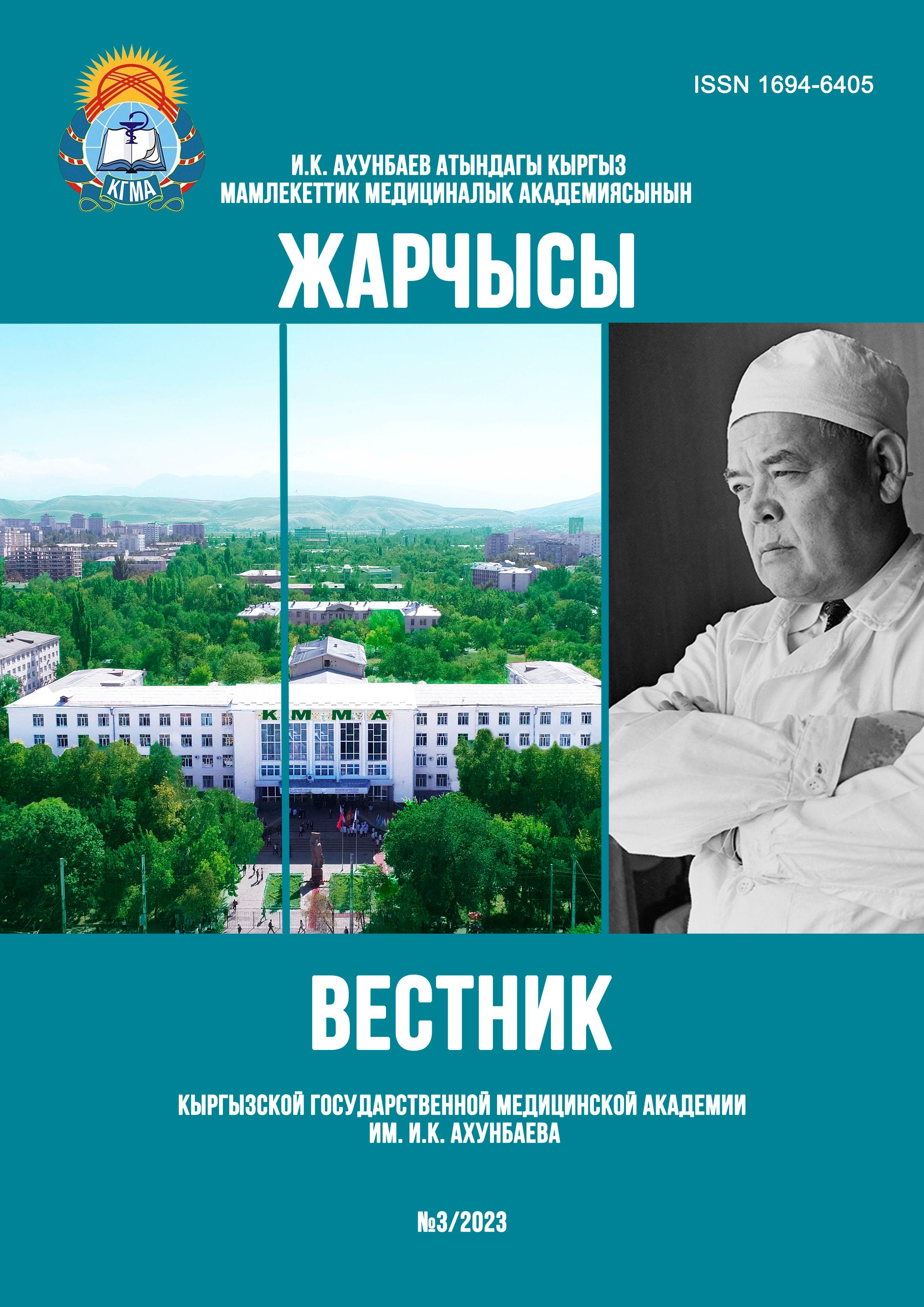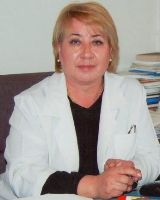ANALYSIS OF AVAILABLE OLFACTOMETRY METHODS
DOI:
https://doi.org/10.54890/1694-6405_2023_4_181Abstract
Olfactometry (the study of the olfactory function) involves the use of quantitativemethods to study the acuity of smell (determining the thresholds for the perception of odorous substances, the time of adaptation and recovery of smell), as well as qualitative methods to identify the ability to recognize and differentiate odors [1]. To determine the degree of damage, methods for determining the olfactory function using olfactometry were considered. We also analyzed the available olfactometry methods in the CIS countries, the USA and Europe. After the analysis, we have selected a modified set of olfactometry, more suitable for working with residents of the Kyrgyz Republic. The proposed set includes 9 odorants - odorants easily recognizable by patients. Odorants are presented in the form of solutions and placed in vacutainers. In the course of the work, indicators of the norm of the olfactory function were determined, as well as the prevalence of the level of damage to the olfactory analyzer. A possible relationship has been identified between the age of patients who have had a coronavirus infection and their ability to restore their sense of smell. The work done makes it possible to carry out olfactometry at all levels of otorhinolaryngological care and in the future to approach the treatment of disorders of the olfactory analyzer in more detail.
Keywords:
Olfactometry, damage to the olfactory analyzer, epidemic, coronavirus infection, neoplasms of the anterior cranial fossa, psychiatric diseases, thresholds of the olfactory analyzer, dysosmia.References
1. Афонькин В.Ю., Домрачев A.A. Об исследовании обонятельного анализатора. Вестник оториноларингологии. 2002;2:45-46.
2. Киселев В.Д., Томилова И.Н., Плешкова Н.В. Лабораторный практикум по физиологии человека. Барнаул: Изд-во АлтГУ; 2008.125 с.
3. Adrian E. Recent developments in the study of sense organs J. Royal Soc. Arts (UK). 1954;102(8):756-763
4. Вахрушев С.Г., Смбатян А.С. Диагностическая ценность различных методов ольфактометрии. Российская оториноларингология. 2016;3(82):48-53. https://doi.org/10.18692/1810-4800-2016-3-48-53
5. Морозова С.В., Савватеева Д.М., Петрова Е.И. Обонятельные расстройства у пациентов с нейродегенеративными и психическими заболеваниями. Неврологический журнал. 2014;19(1):4-8
6. Штаб КР по COVID-19 [Электронный ресурс]. Режим доступа: https://t.me/RshKRCOV (дата обращения: 07.02.23).
7. Покровский В.И., Киселев О.И., Назаров П.Г. SARS: тяжелый острый респираторный синдром. Новый вирус, новая болезнь. Цитокины и воспаление. 2003;2(2):42–51.
8. Буланов А.Ю., Ройтман Е. В. Новая коронавирусная инфекция, система гемостаза и проблемы дозирования гепаринов: это важно сказать сейчас. Тромбоз, гемостаз и реология. 2020;2:11–18. https://doi.org/10.2555/THR. 2020.2.0913
9. Временные методические рекомендации «Профилактика, диагностика и лечение новой коронавирусной инфекции (COVID-19)», Версия 7 (03.06.2020). Министерство здравоохранения Российской Федерации. 2020. 166 с. Режим доступа: http://mpmo.ru/content/2020/06/Metodicheskie–recomendatsiiminzdrava-RF-versiya-7.pdf
10. Paules CI, Marston HD, Fauci AS. Coronavirus infections – more than just the common cold. JAMA. 2020;323(8): 707-8https://doi.org/10.1001/jama.2020.0757
11. Guan WJ, Ni ZY, Hu Y, Liang WH, Ou CQ, He JX et al. Clinical Characteristics of Coronavirus Disease 2019 in China. N Engl. J Med. 2020;382:1708-1720. https://doi.org/10.1056/NEJMoa2002032
12. The Novel Coronavirus Pneumonia Emergency Response Epidemiology Team. The Epidemiological Characteristics of an Outbreak of 2019 Novel Coronavirus Diseases (COVID-19) – China, 2020. China CDC Weekly. 2020; 2(8):113–22.
13. Зеликович Е.И. Лучевая диагностика. В кн.: Богомильский М.Р., Чистякова В.Р., ред. Детская оториноларингология. Руководство для врачей в двух томах. Т. 2. М.; 2005:120-162
14. Mandel SA, Morelli M, Halperin I, Korczyn AD. Biomarkers for prediction and targeted prevention of Alzheimer's and Parkinson's diseases: evaluation of drug clinical efficacy. EPMA J. 2010 Jun;1(2):273-92. https://doi.org/10.1007/s13167-010-0036-z
14. Simmen D, Briner H.R, Hess K. Screeningtest des Geruchssinnes mit Riechdisketten Screening of olfaction with smell diskettes. Laryngorhinootologie. 1999;78(3):125-130. https://doi.org/10.1055/s-2007-996844
15. Морозова С.В., Савватеева Д.М., Тимурзиева А.Б. Обонятельные расстройства у пациентов с психическими заболеваниями. Журнал неврологии и психиатрии. 2014;(7):73-78.
16. Морохоев. В.И. Ольфактометрия в клинической практике. Практическая медицина. 2011;(3):19-21.







